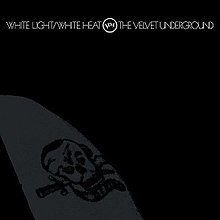Caffé Latté looks back at…
THE 200
MOST ESSENTIAL
SONGS
OF THE
1960s
No
decade was as turbulent as the 1960s. Politically and socially, there was turmoil.
Musically too, the rules were changing at breakneck speed. This was the decade
of Flower Power, Motown, Woodstock, girl groups, Beatlemania, psychedelia and
The British Invasion. Here are 200 songs that matter most from the period.
These recordings had an impact on music and provided the soundtrack to the 10 years
that made up the Sixties.
#140
IF I HAD A HAMMER
Peter, Paul & Mary
Although written years before by Pete Seeger and recorded by The Weavers, the remake of "If I Had A Hammer" by Peter, Paul & Mary in 1962 marked a shift in that decade's folk music. Protest songs such as this steered the genre into a more political direction.
#139

IN DREAMS
Roy Orbison
Pure magic, this adeptly executed 1963 recording features that heavenly operatic vocal that was trademark Roy Orbison. "In Dreams" was penned by The Big O himself and uses a familiar theme in his repertoire: dreams. In his slumber, he is in a relationship with the object of his affection. Orbison's voice betrays his yearning and the sad reality that the scenarios he describes are in the past.
#138

I'M A BELIEVER
The Monkees
Neil Diamond penned this catchy tune for The Monkees. The American group released the single in 1966. "I'm A Believer" soon topped the charts in America, Britain, Europe, Canada, Australia and New Zealand.
#137

DOES ANYBODY REALLY KNOW WHAT TIME IT IS
Chicago
Chicago's debut album 'Chicago Transit Authority' was issued in 1969. Its appeal set the band up for a string of best sellers in the ensuing decade. "Does Anybody Really Know What Time It Is", the third single lifted off the LP, fused jazz with pop, taking the sound of Blood, Sweat & Tears into new territory. The single reached the U.S. Top 10 in 1970.
#136
IT SHOULD HAVE BEEN ME
Gladys Knight & The Pips
Aretha may have been crowned the Queen and Diana Ross may have been holding court at Motown, but no one infused heartache and drama into a song better than Gladys Knight. With The Pips, she performed "It Should Have Been Me" and scored another Soul Chart Top 10 hit in 1968.
#135
CALIFORNIA DREAMIN'
The Mamas & The Papas
Released in 1965, "California Dreamin'" beckoned hundreds of disillusioned youths to the promise of the American West Coast. Its references to a cold wintry climate persuaded many to seek sunshine and a happier existence in California. It remains a song that defines the Sixties.
#134

WHITE LIGHT/ WHITE HEAT
The Velvet Underground
Written by Lou Reed, "White Light / White Heat" influenced countless innovative musicians that followed in its wake, David Bowie among them. Issued as a single in 1967, it preceded the album for which this was the title track.
#133
READY OR NOT HERE I COME
(CAN'T HIDE FROM LOVE)
The Delfonics
Thom Bell's work as producer for The Delfonics serves as a bridge between 60s soul music and the Philly sound that would come to fruition in the 1970s.
#132

THESE BOOTS ARE MADE FOR WALKIN'
Nancy Sinatra
In 1966, Nancy Sinatra marched her way up to #1 on both sides of the Atlantic with one of the seminal recordings to inspire girl-power in pop music.
#131

I FOUGHT THE LAW
Bobby Fuller Four
Despite being defeated by the song's conclusion, "I Fought The Law" still holds up as a song about defying the law. As one of the archetypal outlaw rock songs, it made the American Top 10 in 1966. The song had originally been recorded by The Crickets following the death of its lead singer Buddy Holly in a plane crash. Ironically, Fuller was found dead in July 1966 in a parked car. While officially the cause of death was reported as a suicide, many of those who knew him remained unconvinced of the theory.
1960
1961
1962
1963
1964
1965
1966
1967
1968
1969
No comments:
Post a Comment